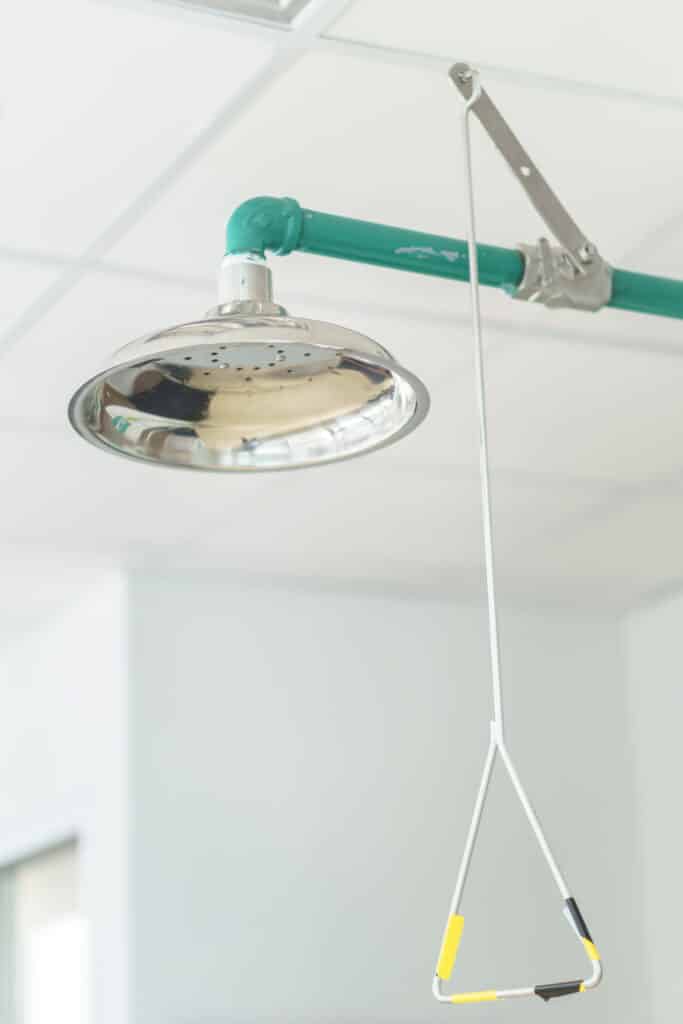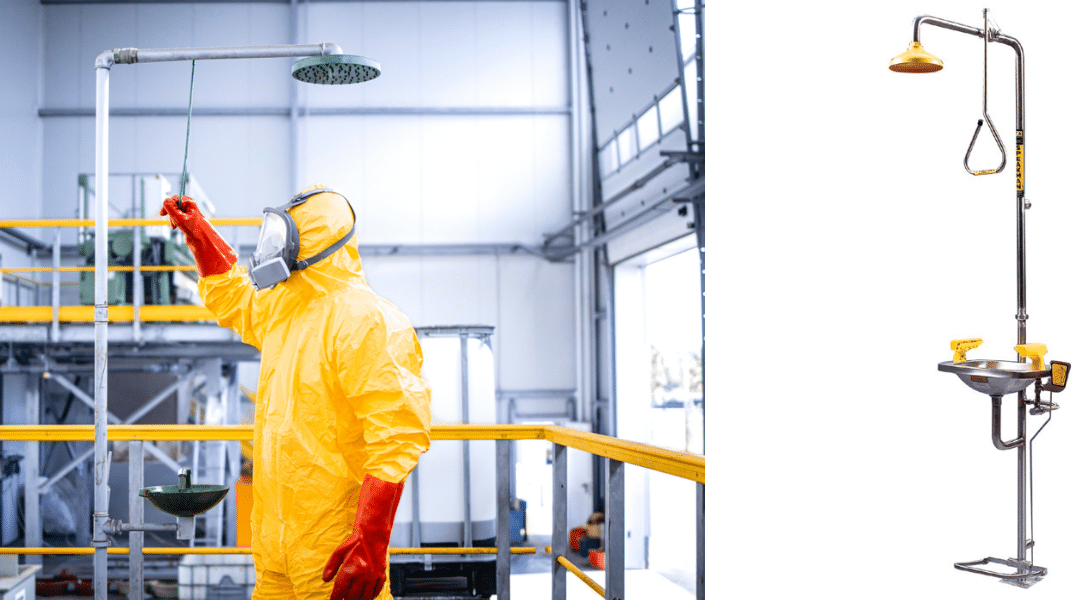In Australia, there are strict standards and requirements regarding safety shower and eyewash equipment in the workplace. These standards and requirements are set under AS4775:2007 “Emergency Eyewash and Shower Equipment,” which sets out requirements for the proper selection, installation, operation, and maintenance of emergency equipment.
Why is maintenance important and how often should you do it?
It is crucial to maintain safety shower and eyewash equipment to ensure they are functioning effectively and in compliance with safety regulations. While safety showers must be comprehensively inspected and fitted with a compliance tag, annually; it is recommended that weekly visual inspections and monthly functional checks are performed to ensure everything is in working order. There are several reasons why weekly, monthly, and annual maintenance is important:
- It ensures that the equipment is ready for use in case of an emergency.
- Proper maintenance can prevent malfunction or breakdown, which may lead to accidents.
- It can identify potential issues before they become major problems, thereby saving time and money in the long run.
By adhering to a maintenance schedule, you can guarantee that your safety shower and eyewash equipment is always ready to protect your employees and your business.

Emergency eyewash and safety shower station equipment in chemical laboratory
What are the compliance requirements?
As mentioned, safety showers and eyewash stations must comply with AS4775:2007. This is to ensure the equipment is in safe working order and to guarantee compliance.
To comply with this standard, a range of requirements must be considered and met. These requirements include:
Water requirements
The minimum water requirement for safety shower equipment, whether it is plumbed-in or self-contained, is 75.5 litres per minute. The flow rate should be fast enough to flush out any chemicals and should not cause injury to the users. This rate must be consistent and unobstructed for at least fifteen minutes. To avoid additional injuries, such as scalding or thermal burns, the Australian Standard for a safety shower requires tepid water to be used.
Valve requirements
Valves must transition from fully closed to fully open within one second or less. Valves must remain open without the need for the user’s hands. This mechanism will enable the user to remove their clothing under running water and thoroughly wash their body without worrying about having to keep the valves open.
Actuator Requirements
The actuator valves must be easy to find and recognize. Once they are opened, they should stay open without requiring the user’s hands, unless they are intentionally turned off. Actuator valves should not be placed more than 1733mm above the level on which the typical user would stand.
Access requirements
Emergency units must be clear of obstructions and within 10 seconds of hazards. Safety showers must be on the same level as the hazard, and the paths leading to them must be identified and unobstructed. Workplaces dealing with corrosives and acids need an eyewash unit directly adjacent to these substances.
Nozzle requirements
Nozzles must be protected from airborne contaminants. The design of the eyewash station must allow for the eyelids to be held open while the eyes are in the flushing system.
Signage and visibility requirements
For maximum visibility, the area around the safety shower must be well-lit. Additionally, it is important to have highly visible signs that comply with the safety signs regulations for the occupational environment (AS 1319-1994). These signs should also include symbols or diagrams that are universally understood so that language skills are not required to comprehend them.
Maintenance and visibility requirement
The Safety Shower Australian Standard states that designated laboratory technical officers must carry out weekly safety shower tests. Annual flow testing is also required for all safety shower units and eyewash stations to ensure they can function effectively in an emergency.
Training requirements
All workers dealing with potentially harmful substances must be trained on how to access and use the safety showers in the workplace.
How Sedl Agencies can help
It is essential to ensure that your safety shower and eyewash equipment is always well-maintained to keep your employees safe from potential hazards. Sedl Agencies has dedicated safety shower and eyewash equipment inspectors who are trained to maintain the equipment with safety being their top priority.
Our inspectors not only ensure that your equipment is safe and ready to use, but they can also assist you in developing a maintenance schedule to keep it in optimal condition.
To get in touch with our team, click here.
Alternatively, send our team an email at: sales@sedl.com.au

